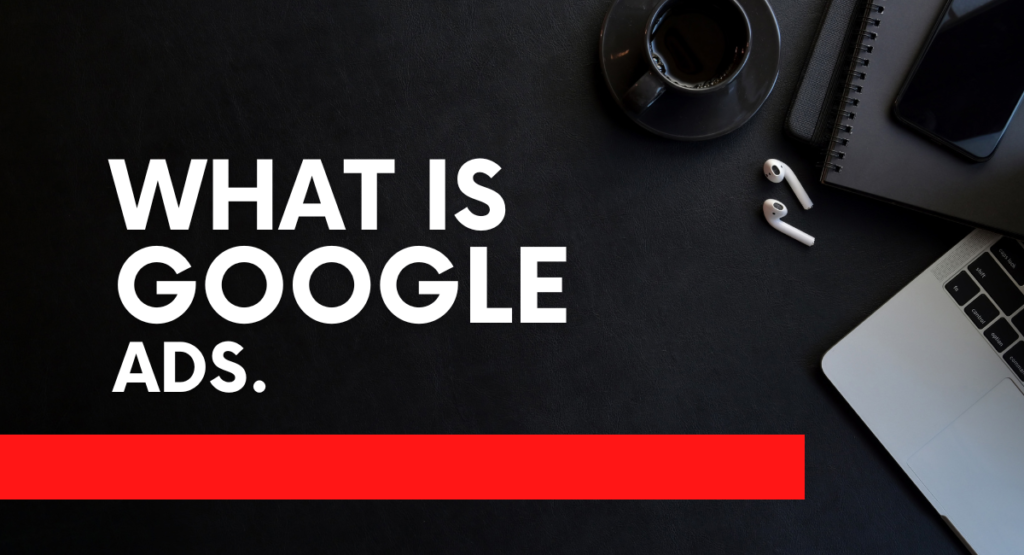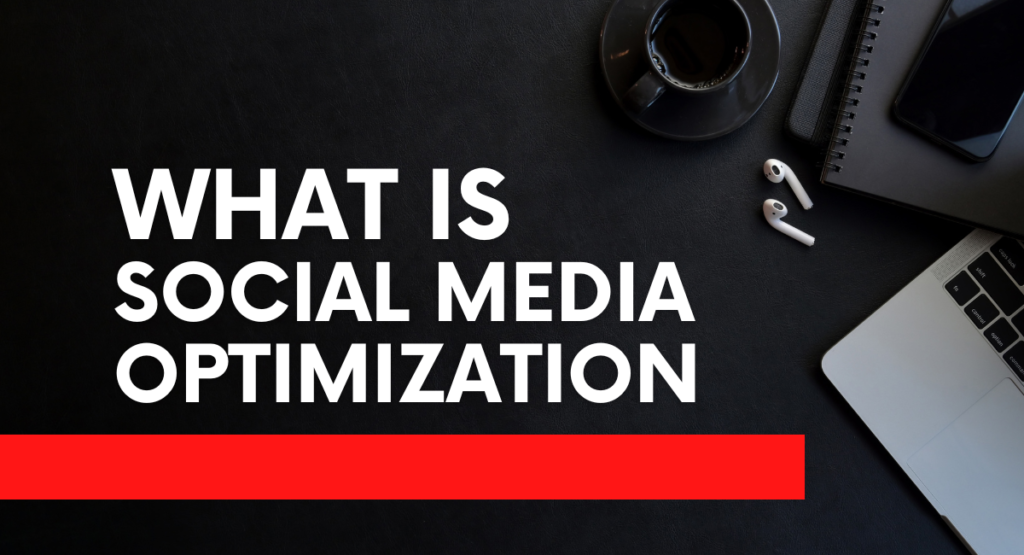Introduction
Businesses must engage in meaningful interactions with their target consumers in order to thrive in the current digital landscape. Businesses may use Google Ads to promote their products and services throughout Google’s vast network. Google AdWords provides tailored advertising and real-time statistics to help companies of all sizes connect with potential clients. Every digital marketing strategy must include Google Ads since they boost traffic, exposure, and conversions.
Brief Overview of Google Ads
Google Ads, formerly known as Google AdWords, is an online advertising network that enables businesses to post adverts on Google’s search results page and partner websites. Advertisers bid on phrases related to the services that customers search for, and their ads appear in the search results. Marketers may use the platform’s assortment of ad types to tailor their campaigns to specific target populations. Among these are text, display, video, and retail advertisements. With Google AdWords, creating an online presence is more versatile thanks to targeting, budget control, and performance tracking options.
Importance of Google Ads in Digital Marketing
Google AdWords is an essential component of digital marketing since it gives companies a direct line of communication with prospective clients who are actively looking for their goods or services. Because accurate targeting based on user behaviour, interests, and demographics is made feasible, it guarantees that the correct individuals see the adverts. Moreover, Google AdWords provides quantifiable outcomes via in-depth analytics, allowing advertisers to evaluate the campaign’s efficacy and refine their approach. Because Google AdWords can quickly generate traffic and raise brand exposure, it is an essential part of any digital marketing plan.
What is Google Ads?
Businesses can generate and show ads on the Google network and in search results by using the Google Ads platform. Targeted advertising aims to maximise return on investment by connecting advertisers with prospective customers who are actively seeking goods or services.
Definition and Purpose
The word “Google Ads” refers to a group of different types of advertisements that appear on search results pages, applications, and websites. Text, picture, and video ads are among these types. Google Ads uses efficient internet marketing techniques to build brand exposure, create leads or sales, and enhance website traffic.
History and Evolution
In October 2000, Google Ads—formerly known as Google AdWords—shifted its focus to text-based search advertisements. Because of the ever-changing landscape of digital marketing and user behaviour, it has expanded over time to encompass YouTube videos, display advertisements, and store commercials.
Key Components of Google Ads
Important Google AdWords features are ad formats, targeting choices, bidding tactics, and campaign types. Based on their demographics, hobbies, and online behaviour, a variety of campaign categories, including search, display, and video, can be used to target specific individuals with advertising.
How Google Ads Works
Pay-per-click (PPC) bids are placed by advertisers on Google Ads for terms related to their goods or services. Google helps advertisers place their ads more effectively by showing appropriate ads in response to user queries based on quality score, advertiser bid, and overall relevancy.
The Auction System
Ads auction system are ads that show up in search results and where they appear are decided by the Google. Every time a user searches, advertisers engage in auctions, and Google determines which advertisements to display based on the pricing and quality ratings.
- Explanation of Ad Auction
Google assesses advertising in the ad auction process according to the highest bid and quality score, a computation that accounts for user experience and relevancy. This establishes a balanced and mutually advantageous environment for consumers and advertisers, ensuring that the most valuable advertisements are displayed.
- Bidding Strategies
Target CPA, automatic, and manual bidding are just a few options available to advertisers utilising Google AdWords. Depending on the objectives and financial constraints of the advertiser, each strategy seeks to maximise clicks, conversions, or impressions in order to maximise ad performance.
Ad Rank and Quality Score
Ad Rank is the number that determines where an ad appears in the search results and is calculated by adding the bid money and quality score. In order to raise the visibility of their adverts and maybe boost the click-through rate, advertisers need to improve their campaigns.
- What is Ad Rank?
Google employs a statistic called Ad Rank to decide where to display advertising in search results. To make sure that the most relevant ads show up first, it takes into account the advertiser’s bid amount, quality score, and the expected impact of extensions and other ad formats.
- Factors Affecting Quality Score
Several factors influence the Quality Score, including ad copy, landing page experience, keyword relevancy, and click-through rate (CTR). Higher Quality Scores increase overall campaign efficacy by resulting in better ad placements and lower click-through rates.
Types of Ads and Campaigns
To best meet their goals, advertisers can select from a range of advertising options provided by Google Ads. The search, display, video, commerce, and app promotion ads all meet the main categories of advertising goals.
- Search Ads
“Search ads” are text-based adverts that appear at the top or bottom of Google search results. As users must search for certain terms to activate them, they are incredibly targeted and effective at collecting user intent and driving traffic to websites.
- Display Ads
Display advertisements are displayed on websites that use the Google Display Network’s Banner Ads presentation advertising function. Rich media, videos, and photos may be used, providing marketers with the chance to produce visually captivating content that attracts viewers across several platforms and boosts brand awareness.
- Video Ads
Video advertisements are available on websites such as YouTube in many formats, such as non-skippable and skippable. These commercials use the storytelling potential of videos to draw viewers in and boost traffic, successfully promoting and exposing businesses.
Videos for Promotion
Video advertisements are available on websites such as YouTube in many formats, such as non-skippable and skippable. These commercials use the storytelling potential of videos to draw viewers in and boost traffic, successfully promoting and exposing businesses.
- Shopping Ads
Along with pricing and business names, shopping advertising display products on the Google Shopping tab and search results. Their goal is to use e-commerce product marketing to make it easier for buyers to assess things and buy them directly from search results.
- App Promotion Ads
The purpose of app promotion advertising is to boost mobile application downloads and engagement. Target audiences for advertising campaigns might include Google Search, YouTube, and the Google Display Network to increase in-app behaviours and app installations.
Setting Up Google Ads
Creating a Google Ads Account
Go to the Google Ads website and select “Start Now” to begin the process of creating an account. To log in, you must have a Google account. To correctly set up your account, please provide details about your firm, including its name, website, and billing information, as directed.
Navigating the Dashboard
The most common place for you to manage your campaigns is the Google AdWords dashboard. Important data like clicks, impressions, and expenses are displayed. Learn how to utilise the different tabs, such as Campaigns, Ad Groups, and Keywords, so that you can effectively monitor performance and make any necessary adjustments.
Setting Campaign Goals
A precise explanation of the campaign’s objectives is necessary to assess its success. Clearly state your goals, such as boosting sales, bringing in new clients, or improving website traffic. To ensure alignment with larger corporate objectives, specific goals help define your strategy and direct decisions regarding targeting, budget, and creative ad text.
Defining Target Audience
Advertising success requires knowing who your target audience is. Segment your audience based on their online behaviours, interests, and demographic information. This enables you to tailor your content and advertisements to certain demographics, boosting engagement and your campaign’s overall efficacy.
Crafting Effective Ad Copy and Design
Make compelling advertising language and graphics that make your idea very evident. Ensure that the visual components complement your brand, draw attention to your USPs, and have effective calls to action. You may determine which version most appeals to your target audience by doing A/B tests on many iterations.
Budgeting and Bidding
To get the most out of your advertising investment, you must use efficient planning and bidding tactics. Establish a precise budget that meets both your budgetary constraints and the objectives of your campaign. How much you’re prepared to spend for clicks or impressions (CPA) will depend on your goal cost per acquisition (CPA).
Setting a Budget
Determining how much you are willing to spend on advertisements each day or each month is the first step in creating a budget. Take into account variables including the size of the target market, marketing goals, and the level of competition. Making a budget guarantees the long-term profitability of your advertising activities and helps control expenses.
Choosing the Right Bidding Strategy
Based on your financial situation and desired outcome, choose a bidding strategy. Bids can be placed manually, in which case you choose the price, or automatically using techniques that modify bids depending on bid performance. You may increase the effectiveness and return on investment of your campaign by selecting the best strategy.
- Manual vs. Automated Bidding
With the advantage that manual bidding has over bids for certain keywords, advertisers may implement custom tactics. On the other hand, automated bidding optimises offers based on algorithms to achieve a variety of targeted objectives, such as a rise in click-through rates or conversions. The result will depend on your skill level and the intricacy of your campaigns.
- Cost-per-Click (CPC) vs. Cost-per-Impression (CPM)
Two popular models for google ads are CPC and CPM. Ads that only impose a price upon a user’s click are known as cost-per-click, or CPC, ads. They are really effective in generating traffic. Cost-per-impression (CPM) campaigns are beneficial when exposure is more important than clickthrough rate since they are based on the amount of impressions received.
Monitoring and Adjusting Bids
Keep a close eye on campaign performance to evaluate the effectiveness of your bidding approach. Utilise Google AdWords data to spot patterns and modify bids appropriately. By modifying bids in response to performance data, you can make the most of your advertising budget and ensure that you’re receiving the most return on investment possible.
Optimization Strategies
Analyzing Ad Performance
To assess the efficacy of a campaign, essential performance metrics are examined during the analysis of ad performance. It involves evaluating click-through rates (CTR), conversion rates, and cost per acquisition (CPA). Finding effective ads, enhancing bad ones, and aligning marketing tactics with business goals are all made simpler by this study. It enhances return on investment as well.
- Key Metrics to Track
Metrics like impressions, clicks, CTR, conversions, and CPA are crucial to track while using Google AdWords. Each metric provides insight into the overall efficacy of advertising, audience participation, and ad performance. Marketers may optimise results by making informed decisions and adjusting strategies based on ongoing data monitoring.
- Using Google Analytics with Google Ads
Deeper insights into user activity following ad clicks are made possible by integrating Google Analytics with Google Ads. Useful information on user sessions, bounce rates, and conversion routes is provided via this link. Understanding client journeys with the use of this data enhances the effectiveness of advertisements and enables more targeted plan building.
A/B Testing and Experimentation
Comparing two versions of an advertisement to see which works better is known as A/B testing. Some features that do well in this type of testing are headlines, photos, and calls to action. By carefully testing several iterations, marketers may enhance ad effectiveness, boost engagement, and promote greater conversion rates.
Improving Quality Score
Ads, keywords, and landing sites are evaluated for quality and relevance using the Quality Score. Make sure landing pages offer a great user experience, employ focused keywords, and create appropriate ad wording if you want to raise this score. Higher quality ratings may translate into more affordable prices and superior ad placements.
Ad Extensions and Their Benefits
Google Ads are improved with ad extensions, which provide more details like address, phone number, and connections to certain pages. By increasing awareness and encouraging dialogue, these extensions make it easier for users to get additional information. Campaign performance may be enhanced overall and CTR may rise with the deployment of extensions.
Advanced Google Ads Techniques
Negative keywords, automated bidding techniques, and customised audiences are examples of advanced Google AdWords tactics. These tactics assist to optimise bids, decrease irrelevant clicks, and fine-tune targeting by utilising real-time performance data. Using these strategies might result in a considerable increase in campaign efficacy and ROI.
Remarketing and Retargeting
The technique of concentrating on customers who have previously interacted with an advertiser’s website or advertisements is known as remarketing or retargeting. Businesses may strengthen their messaging and boost conversions by presenting these customers with tailored adverts. This tactic raises the possibility of repeat business and enhances brand remember.
Using Customer Match
Using Customer Match, marketers may target specific audiences by utilising their existing customer data, such as email addresses. Businesses may develop customised advertising targeted at past consumers by submitting this data to Google advertising, which will increase the likelihood of re-engagement and boost conversion rates.
Dynamic Search Ads
Dynamic search advertisements are perfect for companies with large product catalogues since they are automatically generated depending on the content of websites. These advertisements maximise exposure by focussing on relevant queries without using a list of keywords. They may be utilised in addition to currently running keyword-focused advertising and are helpful for boosting traffic.
Google Ads Scripts and Automation
With Google Ads scripts, advertisers can automate tedious operations and streamline campaign management. Businesses may automate bid optimisation, scheduling adjustments, and report creation with bespoke scripts. Marketers may have more time to devote to their creative and strategic elements if processes are automated.
Future Trends in Google Ads
Additional automation, AI-powered optimisation, and more customised ad experiences are among Google AdWords’ future objectives. To remain competitive and effectively reach their target audience, marketers need to leverage data and state-of-the-art technology to adjust to changing customer tastes and behaviours.
AI and Machine Learning Integration
Google AdWords is starting to include AI and machine learning, which will allow for more advanced bidding techniques, customised ad experiences, and improved audience targeting. With the help of these technologies, which analyse enormous volumes of data to find trends and quickly enhance campaigns, ads will perform better overall.
Privacy Changes and Their Impact
Restrictions on cookies and other privacy-related matters affect the gathering and use of advertising data. In order to stay within these boundaries and continue to be able to target customers successfully, marketers will need to make adjustments to their methods. Sustaining advertising efforts will need preserving customer trust.
Evolving Ad Formats and Technologies
As ad formats continue to evolve, new concepts like interactive ads, video content, and immersive experiences are gaining traction. By staying current with these formats, marketers may use emerging technologies and attract clients in fresh ways that boost interaction and boost conversion rates.
Conclusion
When it comes to helping businesses boost their online visibility, attract relevant traffic, and produce quantifiable outcomes, Google Ads is an indispensable tool. Due to its flexibility, advertisers can target specific audiences with their ads based on demographics, region, and keyword targeting. Businesses who use a pay-per-click strategy and a lot of data might improve their marketing efforts and spend money more wisely. Due to the platform’s availability of search, display, and video adverts, marketers may engage with prospective customers throughout the whole buying process. Google Ads is an essential component of any digital marketing plan since, when utilised effectively, it maximises return on investment while increasing visitors and leads.
FAQ’s
What is the difference between Google Ads and Google AdSense?
Google Ad and GoogleAdsense both are platforms of Google Ad is for advertisers while Google Adsense is for publishers.
How can I improve my ad’s Quality Score?
Using properly selected keywords and appealing ad content will help you improve landing page optimisation, ad relevancy, and click-through rates, all of which will increase your Quality Score.
What is remarketing, and how does it work?
Remarketing is one of the most popular digital marketing strategy that helps businesses reaching out their past visitors and acts as a reminder for them to take the desired action.
What are Google Ads Scripts and how can they be useful?
Google Ads Scripts are JavaScript-based programs that automate repetitive activities, streamline reporting, and efficiently manage campaigns to maximise production and reduce downtime.







